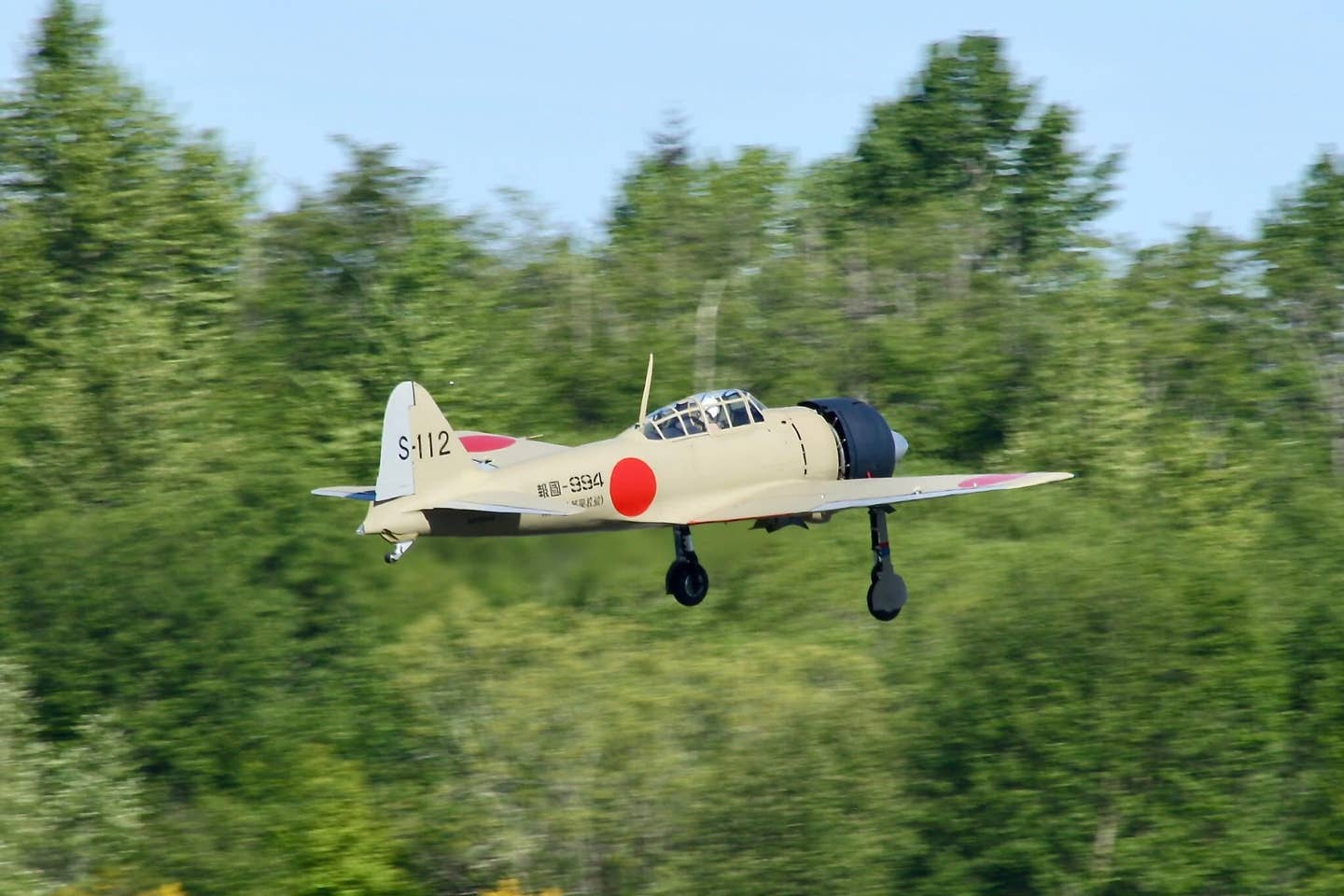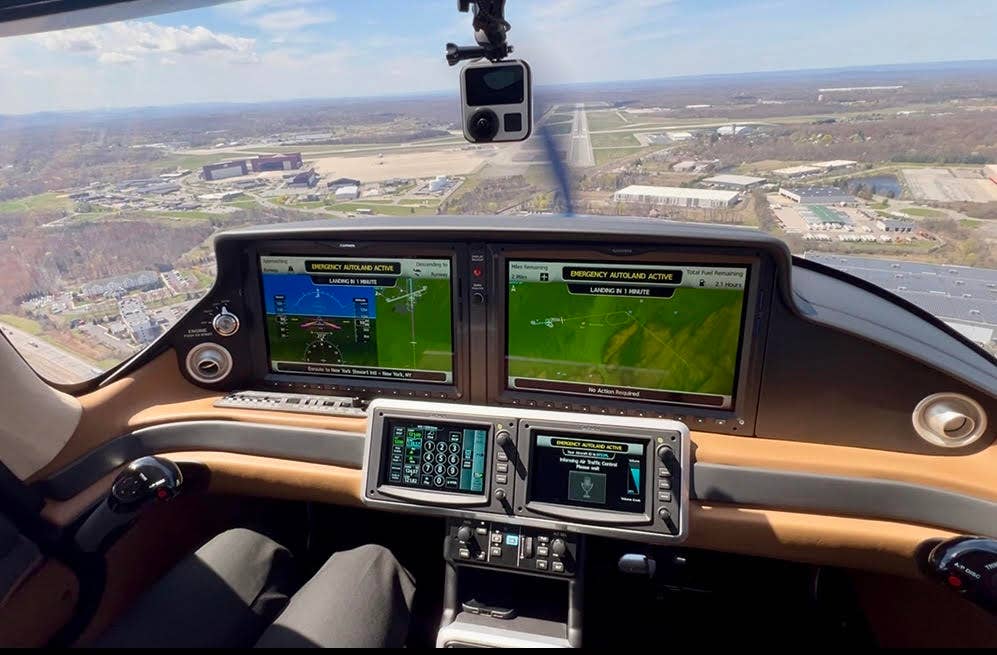Long-Awaited A6M3 ‘Hamp’ Restoration Makes First Flights
First recovered in 1991 from a remote atoll airstrip, the abandoned Japanese naval fighter flew for the first time since World War II.

Legend Flyers proudly announced its Mitsubishi A6M3 Zero restoration has achieved flying status. Credit: Legend Flyers
Following “a two-year project that’s now in its 13th year,” Seattle-based Legend Flyers owner Bob Hammer described for AVweb the first flights of the restoration shop’s Mitsubishi A6M3-32 Zero fighter this week. Mike Spalding, chief pilot for the Military Aircraft Museum of Virginia Beach, Virginia, performed the two test flights, marking the first time the aircraft has broken ground since World War II.
“The first flight lasted about an hour,” Hammer told AVweb, “and the second was an hour and a half.” Spalding performed stall tests and basic maneuvers, including landing gear retraction. “Everything went great,” Hammer said.
The Military Aircraft Museum has committed to buying the “Hamp” version of the Zero and is expected to take delivery after the FAA-mandated 25 hours of flight testing. The test program is expected to be completed this summer.
The history of the aircraft dates back to World War II. It was abandoned on the airstrip of an atoll in the Marshall Chain when the Japanese evacuated the island in 1943. American forces simply bypassed the island and it was never invaded, according to Hammer. “In 1991,” he said, “a couple of guys from Honolulu traded a Ford tractor for two aircraft.” The Hamp was one; he didn’t know what the other was. Hammer described the A6M3 as “shot to hell” by bullets and shrapnel.
Like many warbird projects, the Hamp made a few stops along the way to Legend Flyers. Hammer described the pathway to his door as “a long story.” He summarized, “I’m the fifth person to start the restoration, but the only one to finish it.”
The Japanese navy’s A6M3 is a more powerful version of the earlier A6M2 “Zero” or “Zeke.” It entered service in 1942 and was initially code-named “Hap” in honor of U.S. General Hap Arnold. It’s said that the general was less than thrilled with that “honor,” so the designation was changed to “Hamp.” But when it was learned that the new fighter was essentially a Zero with a more powerful engine, it became more widely known as the “Zeke-32.”
Though the Legend Flyers airplane was originally slated to fly behind an original Japanese Sakae radial engine, plans ultimately shifted to incorporate the much less expensive and more easily maintained Pratt & Whitney R1830-92, being readily found on many a Douglas DC-3. The three-blade propeller is a modified DC-3 version, with a spinner reworked from a Lockheed Super Constellation. When the engine was assembled by nearby Precision Engines, it was painted to match the colors of an original Japanese Sakae radial.
The restoration includes more than 200 original parts, including the main landing gear and many of the cockpit instruments and controls. It also features a centerline fuel drop tank, though it is only to be mounted for static display. It also includes a carrier tailhook that could be made to be functional but is currently wired in the retracted position.






